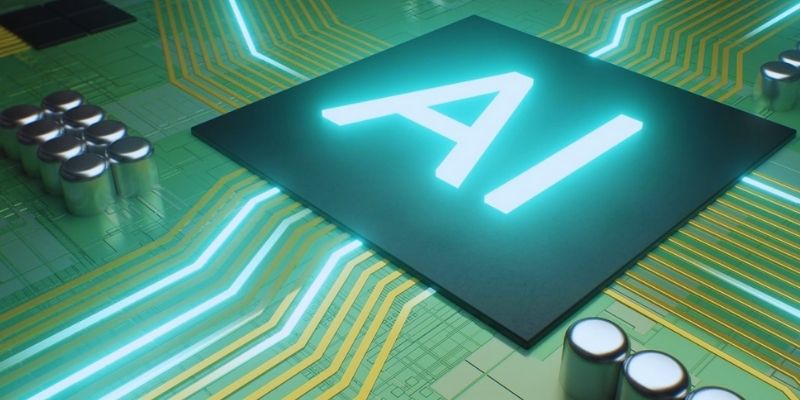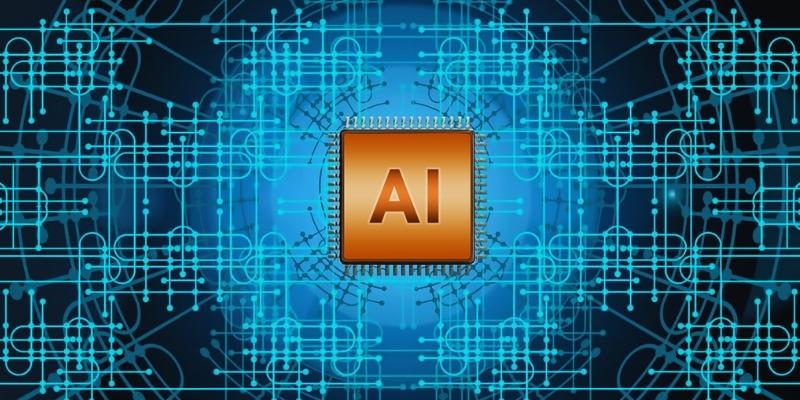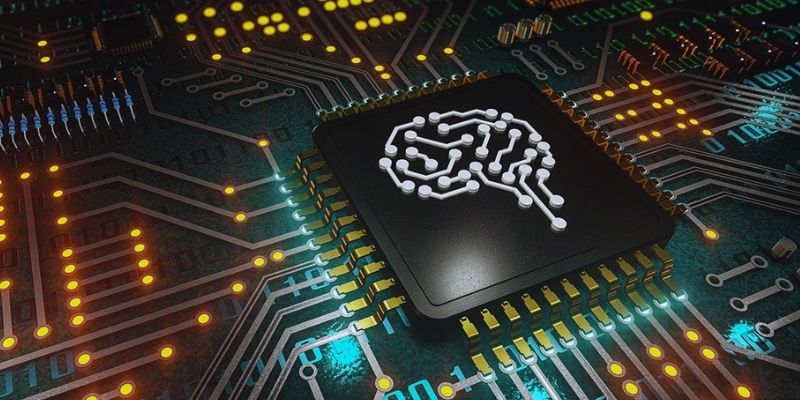Advertisement
Nowadays, artificial intelligence permeates everything. It runs our cameras, smart speakers, phones, and even vehicles. But have you ever considered how rapidly and precisely artificial intelligence operates? The solution is in a potent piece of technology, an artificial intelligence accelerator. These little chips enable real-time response and thinking for artificial intelligence systems—AI accelerators power features like face recognition and voice command responses.
They handle complex tasks that regular chips cannot process fast enough. You are in the proper place if you want to know how artificial intelligence derives its speed and power. This guide will cover everything you need to know about AI accelerators. You don't need technical skills—just a bit of curiosity. Let's investigate how these intelligent chips are altering our surroundings.

An artificial intelligence accelerator is a specific computer chip that executes artificial intelligence tasks quicker and more effectively than standard CPUs. While they struggle with the enormous data and sophisticated math needed in artificial intelligence, traditional CPUs are good for overall computing. Common in machine learning and neural networks, artificial intelligence accelerators are designed to manage processes, including matrix multiplication and deep learning.
These chips are perfect for managing vast amounts of data and real-time applications since they simultaneously execute several tasks utilizing parallel computing. Smart homes, data centers, cellphones, self-driving cars, and more all feature them. GPUs, TPUs, FPGAs, and ASICs are typical artificial intelligence accelerators. Depending on the work, each has particular advantages. These accelerators are crucial for enhancing performance while lowering energy consumption as artificial intelligence rapidly expands in many fields.
AI accelerators are important because they help artificial intelligence systems run faster, smarter, and more efficiently. AI jobs need massive volumes of data and sophisticated computations that normal computer CPUs cannot rapidly manage. AI models would take too long to train and react without accelerators, making them less valuable in practical uses. AI accelerators tackle this through parallel processing by doing thousands of simultaneous processes.
They cut the time needed to evaluate facts, spot trends, and make conclusions. This speed is vital for real-time applications, including self-driving cars, medical diagnostics, and voice assistants. Ideal for mobile and edge devices, AI accelerators also utilize less energy than conventional CPUs handling the same chores. Their simplicity lets artificial intelligence run in everything from cloud servers to cell phones. Accelerators will be more important as artificial intelligence permeates more sectors to enable quicker, safer, more dependable intelligent systems.
Using parallel processing allows AI accelerators to run several computations concurrently. Their construction consists of hundreds of little processing units known as cores. Every core addresses a tiny portion of the work, accelerating the process. These chips are particularly adept when working with tensors—that is, multi-dimensional arrays of numbers used in artificial intelligence algorithms to learn patterns from data. AI accelerators are designed for deep learning and require heavy matrix multiplication.
Standard CPUs slow down at this; accelerators accomplish it fast and effectively. Their built-in memory enables them to access and migrate data faster than standard computer chips. AI accelerators are perfect for jobs such as image recognition, speech processing, and autonomous driving, which are a mix of speed, efficiency, and clever design. Their capacity to use less energy and analyze enormous volumes of data enables artificial intelligence systems to operate in real-time across many devices and sectors.

Different kinds of artificial intelligence accelerators exist and are designed for particular applications. Their special advantages vary based on their usage location and method. The most often occurring forms are below:
Many fields find AI accelerators useful for increasing performance and speed. Smartphones run facial recognition, voice assistants, and camera upgrades. These components enable the phone to react fast without running down its battery. AI accelerators in data centers manage cloud services and conduct big-scale tasks, including training machine learning models. They let businesses like Google, Amazon, and Microsoft provide quick, intelligent offerings.
AI accelerators in self-driving cars real-time process camera and sensor data. It keeps the automobile safe and guides fast driving decisions. They are also present in the medical field, enabling physicians to diagnose ailments faster and examine medical imaging. AI accelerators enable inventory tracking and product recommendations in retail. Smart house appliances use them to identify voices and operate under control. They run robots and quality inspections even in manufacturers.
AI accelerators are powerful tools enabling artificial intelligence to be faster, smarter, and more practical. These processors let artificial intelligence operate in real-time—on your phone, in a car, in a data center, or elsewhere. They make everything run better, from training sophisticated models to enabling devices to react instantaneously. Faster and more effective accelerators will be needed as artificial intelligence keeps expanding. Knowing their mechanisms helps us appreciate contemporary smart technologies' latent power. These little bits alter our daily lives, jobs, and interactions with our surroundings.
Advertisement

Learn how to access GPT-4 on ChatGPT. Follow these steps to unlock AI features and boost your productivity.

Learn how to create effective charts using ggplot in Python. This guide covers syntax, setup, and examples for powerful data visualization using the plotnine library

Adobe plans to integrate generative AI tools from OpenAI and others to boost creative workflows and user productivity

Explore machine learning use cases and business benefits from marketing to cybersecurity.

In daily life, inductive arguments transform ideas, guide behavior, and enable intelligent choices grounded on noticed trends

Discover VR’s present and future: gaming, therapy, training and metaverse integration. VR trends for 2030.

Discover how ChatGPT can revolutionize your cooking routine by offering meal plans, recipe ideas, and even cooking tips based on what’s in your kitchen

Discover reinforcement learning key concepts, training AI through feedback, and machine learning with rewards in action here

Want to chat, learn, or translate using ChatGPT in another language? Discover how it handles multiple languages and helps with grammar, vocabulary, and fluency

Know what an AI accelerator is, how it works, and why it's vital for powering today's smart tech and intelligent systems

Discover UiPath's latest update with smarter AI bots, easier bot design, improved integration, and powerful automation tools

Looking for the best Synthesia AI alternatives in 2025? Discover smart AI video tools that help you create videos with avatars, text-to-speech, and script automation faster and easier